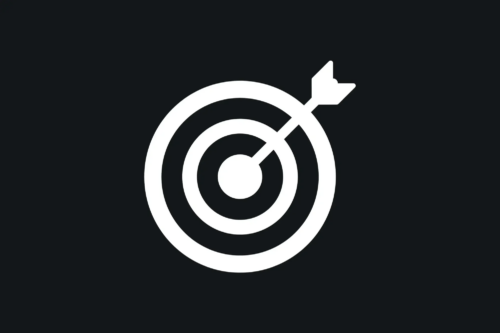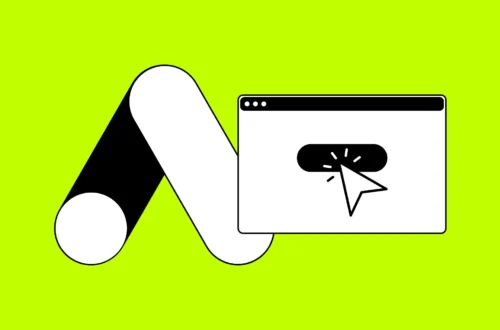
Your multi-location health organization’s leadership has decided that it’s time to redesign your website (or websites).. Maybe it looks outdated, isn’t performing like it used to, or lacks features that your target visitors and patients expect. Whatever the reason, you are now tasked with vetting and choosing the right digital design agency to help you accomplish the redesign and launch of a successful new organization website.
If you’re unsure about exactly how to best accomplish this task, don’t worry. You’re in good company. For many marketing leaders, finding the right agency – one that understands the specific goals of multi-location health and can create a great finished product within budget – is the hardest part of the process.
How to Create a Website Redesign RFP (Request for Proposals)
If this is the first time you’re writing a website design RFP, or if it’s been a while since your last one, you may be wondering what details you should include, how to format it, and what to ask for.
At their core, the best RFPs fulfill these three major tasks:
- Clearly explain the goals of the new website design.
- Describe the criteria for the desires and expectations of the new site.
- Provide the most critical details like functionality requirements, deadlines, and proposal submission information.
It’s also important to make sure you are sending your RFP to the right agencies. Do your research and be choosy when deciding which vendors are the best qualified for your specific project. Keep in mind that you aren’t just asking potential agencies to answer questions that will help you pick the best partner — you’re also communicating who you are and creating an impression of whether they would like to work with you.
8 Key Components to Include in Your Multi-Location Health Organization’s Website Redesign RFP
What you include in your RFP will depend on the amount of detail you have about your current site and patients, and whether or not you have ideas about what you’d like for your new site to accomplish. r However much detail you decide to include,your RFP should include the following sections:.
1. Overview & Organization Background
To open your RFP and set the context for the rest of the proposal, you should start with:
- A description of your organization or practice: Include enough information to give reviewers a sense of your organization, but not so much that you overwhelm your reader with unnecessary history.
- An overview of the services you offer: As with your description, provide enough information about your organization’s services without getting too bogged down with details.
- Why you need a website redesign: Good points to address are your biggest pain points or areas of greatest need as well as 2-3 main goals of your website redesign.
- What the overall requested project includes: include the key features or functionalities most important to you (try for your top 5 to 7).
2. Budget Range
Some marketing leaders are hesitant to include their budget in an RFP, but it’s a crucial detail to provide if you want to receive the best responses. Knowing your budget range helps an agency recommend solutions that are feasible for your project and plan the best way to allocate their time and resources. It’s a waste of both your time and the time of the agency responding if their services are going to be out of your budget. Providing a budget range also lends more credibility to your RFP and shows that you are committed to the project.
For the agencies, having a budget to plan around will help them customize their suggestions for the design and functionalities you’re looking for so they can achieve your goals within that budget. Providing the budget helps to define the playing field for all of the agencies that will potentially respond to your RFP, and make it easier for you to evaluate and compare their responses internally.
3. Timeline & Important Deadlines
Creating a desired, but reasonable timeline for your website redesign is important both for the agencies responding and your internal team. You don’t want your timeline to be so aggressive that you push your team too quickly through important steps, but you also don’t want to let the process draw out and lose steam.
Remember to think about whether there are any events or activities coming up where you’ll definitely need your new website. If there is a pressing event, make sure to get started early and allow adequate time for the crucial creation and testing steps to get the polished, effective website you are looking for.
Unfortunately, there’s no magic answer for how long a website redesign will take. A lot of it depends on how many websites you need to redesign,the number of pages and content on your websites, its functionality and the number of integrations needed, and how you’ll handle approvals. However, a general range for a typical website redesign is anywhere from 3-6 months.
You should provide a projected timeline with your desired launch date that accounts for multiple rounds of revisions and your internal approval process.
In addition to the timeline for your redesign project, you should also include a timeline and dates for your RFP response process. The most important dates to include here are your RFP response deadline and your vendor selection deadline (so agencies know when to expect to hear back from you). You can also provide details such as your timeframe for shortlisting agencies and your plan for interviewing if those steps are part of your plan.
4. Challenges/Reasons for Redesign
In this section, you should define the issues you’re hoping your new website will solve. In order to provide clear details in this section, conduct an audit of your current website or websites to help you uncover what aspects are still working well and which aren’t performing.
Your audit should cover all aspects of your site, including your content, SEO, page performance, and customer journey. As a jumping off point for your analysis, you can use online tools such as HubSpot’s free Website Grader to generate a report showing how well the different aspects of your site are currently performing.
Remember that your website audit is an opportunity to discover what isn’t working on your organization’s current site, but also to uncover what is working well and want to make sure to keep. For example, if your patients recognize and enjoy your current branding, you want to carry that over to the new design.
5. Project Goals
Use the findings of your website audit and the reasons you compiled for your redesign from the previous section as a basis for creating your project goals.
Having a few well considered major goals for your website redesign will help focus the suggestions a responding agency makes for overall design and functionality. Some common major goals include:
- Updating an outdated look or launching a refreshed brand
- Creating a better user experience for patients and internal users
- Adding new functionality or content
- Improving the site’s visibility tactics to increase the number of visitors to your site
GLIDE Health always suggests our clients make sure the major goals for their website are tied back to business objectives. To ensure this, it’s good to ask questions like:
- What is the primary action you want users to take?
- What if they don’t take that action? What else could they do?
- How do these actions support your business model and/or marketing goals?
Once you have set the major goals for your redesign, add some more granular goals under each. An easy way to do this is to create an outline that starts with your main goals prioritized in a numbered list. Then you can add sub-goals that define exactly what success in that goal should look like. This should include actual numbers and metrics that your team will use to evaluate the future success of the redesign.
For example, if your main goal is to increase your organization’s visibility, you could define that goal like this: “Improve average new monthly visitors from X to Y.” Just make sure the goals you set for your site are realistic. You can find some great ideas and suggestions for setting website design goals over at Crazy Egg.
6. Audience
In this section of your RFP, describe target patients or visitors in as much detail as possible. Include information from any demographic data you’ve collected or personas you’ve created for your marketing and sales efforts.
Having a clear and thorough picture of the audience you are trying to attract and engage on your website is critical for the agency responding to your RFP. It will influence everything they suggest, from functionality and UX, to content and aesthetics.
Even if you don’t have specific demographic information or data about your ideal audience, you can still provide details about who they are and why they might be seeking your organization’s services. Some basic questions to get you started on this process should include:
- Who is the primary audience? (i.e. patient, visitor, etc.)
- Who are the secondary audiences? (i.e. vendor, employee, investor, etc)
- What pain point, circumstance or unmet need has brought them to your site?
7. Desired Website & Requirements
This section of your RFP is where you finally get to describe exactly what your ideal website or websites will look like and achieve. Providing clear, detailed descriptions in this section is crucial to receiving RFP responses that tick all of your boxes. When drafting your desired list of features and functionalities for your new site, be sure to identify which are “must haves’ and which would be ‘nice to have’.
Make sure to be as detailed as possible when describing specific features you want included, but be careful not to use ambiguous or subjective terms like “modern” or “interactive” —because they mean different things to different people. provide urls to specific websites you want to emulateTo help the responding agency better understand your desires, include a list of competitor and non-competitor websites you like with notes about the specific aspects that caught your eye, along with a list of the sites you don’t like and why.
If you are requesting services like copywriting, provide details on the type and amount of copy required (i.e. sections, pages, headlines, etc.). The more specific you are in your RFP, the more specific responses you’ll get in proposals.
Functionalities of New Website
Keep in mind that the functionalities you are requesting for your new website or websites are different from your desired website features. A functionality essentially defines what your website can do or how it works. In this section include details such as where your current site or sites are hosted, whether you currently use a a patient portal or EMR, marketing automation platform, and if there are any other third-party integrations you need to make sure are carried over to your new site.
Some common examples of website functionality requests include:
- In-site search
- Blog/news feed
- Photo/video library
- Forms
- Event calendar
- Social sharing tool
- Location map
- Patient portal
- eCommerce/Shopping cart
It’s a good idea to create two separate lists of functionalities – those that are absolutely required, and those that are desired depending on the budget. Separating your ‘desired’ from your ‘required’ will help agencies give details about the differing cost and timeline options for your situation.
8. Proposal Requirements and Selection Criteria
End your RFP by clearly explaining how you and your team will be evaluating proposal responses and making the final selection for your project. Providing an overview outline of what you’d like responding agencies to include in their responses can help you save some time during the evaluation phase. Don’t forget to include the contact information for proposal responses, such as where it should be sent and who to contact with any questions.
For more tips on how to draft your website redesign RFP, check out these examples and template at RFP360.
Choosing the Right Agency for Your Multi-Location Health Organization’s Website Redesign
The RFP process can feel intimidating and time consuming — especially for marketing leaders who have never done one or haven’t done one in a while. However, by following these tips, you can better develop an RFP that gets the best responses and helps you position your redesign project for success.
A website redesign is a big undertaking that requires a good deal of time and a sizable investment to make happen. With that in mind, it’s important to choose the right partner — an agency that has the specific expertise and capabilities to do the work, and an agency that your team will enjoy working with.
At GLIDE Health, our team of designers, developers, and project managers invest their experience in redesigning multi-location health websites and personal drive in helping our thriving clients make the process a smooth one. We’re more than happy to discuss potentially working together and redesigning your website.



